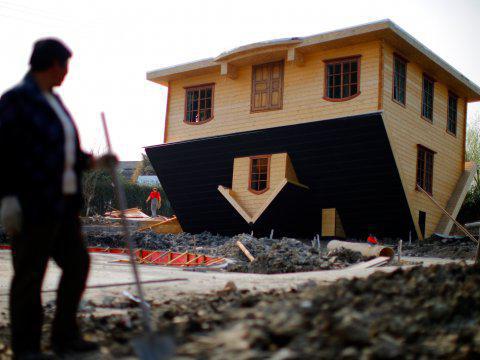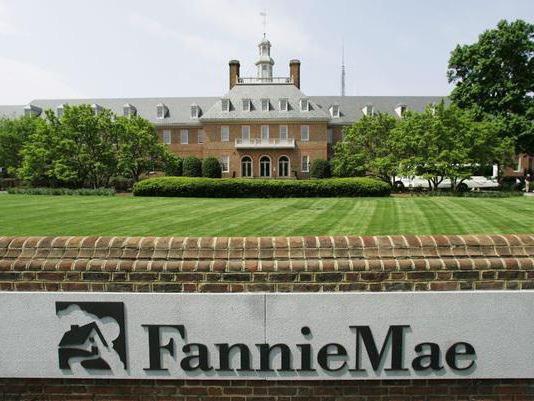American Mortgage Crisis 2007-2008 - The collapse of the real estate market, as well as all securities associated with it. In its destructive scale, it is compared with the Great Depression of the thirties of the last century. The United States of America is a state on whose financial activity stability in the entire capitalist world depends. Therefore, the mortgage crisis in the United States was the first link in the collapse of the global economy. And our country did not stand aside. Russia also suffered from the global crisis. The causes of the mortgage crisis in the United States, as well as its consequences for the global economy, will be discussed in detail in this article. But first, a little about the concept from the point of view of economic theory.

The concept
The US mortgage crisis of 2008 - the collapse of the real estate market due to an increase in delays and defaults on high-risk mortgages. It was accompanied by a massive seizure of real estate in favor of banks and credit organizations. Many prominent economists call this crisis a "scam of the century." Since the time of the Great Depression, American securities have not depreciated at such a rapid rate, which led to a severe decline in stock exchange activity.
The mortgage crisis in the United States led to the massive bankruptcy of the world's largest investment banks, insurance companies. Therefore, this was the beginning of the end of the neocapitalist system of the world, which was formed by the twenty-first century. The consequences of this event have not been overcome to this day, and Russia cannot return to the pre-crisis indicators of economic development at all. Therefore, we can rightly note the fact that the mortgage crisis in the USA in 2008 completed the era of world classical capitalism in the form in which it was before. The whole world realized that bankers, traders and stockists without state intervention are not able to self-regulate.
Similarities to the Great Depression

If we compare the mortgage crisis in the USA in 2008 and the Great Depression, we can find two common features between these two shocks:
- Excessive speculative actions in exchange and banking spheres. In fact, it turned out that the entire financial sector serviced exclusively the game on the stock exchange, that is, all market participants were interested not in the development of real sectors of the economy, but in the development of “virtual spheres” that were divorced from the real situation in the economy.
- Belated response of state and regulatory bodies to crisis phenomena. There are theories that for one reason or another this happened purposefully. For the sake of personal interest, financial regulators and regulatory authorities turned a blind eye to obvious signs of an unhealthy market situation and did not take any measures to adjust the economic course.
Warren Buffett on the Crisis
World largest investor Warren Buffett called the 2008 US mortgage crisis the largest speculative market bubble he had ever seen. He stated this in 2011 during his testimony at the Commission to Investigate the Causes of the Crisis. To questions from the Commission, he stated that all of America and the whole world had convinced themselves that real estate prices would continue forever and never fall. This state of euphoria and mass psychosis defies any logical explanation. The last time the world's largest bankers and financial tycoons were in this state during tulip mania in the Netherlands in the XVII century.
The reasons for the mortgage crisis in the US 2008
Why has one of the most stable, honest and open economies in the world turned into a financial pyramid? There are many theories. Bankers blame the state for this, which did not provide a regulatory policy. Government officials shift the blame for artificially inflating the bubble to traders and brokers. Perhaps both of them are right, but in addition to these, in almost every study about the mortgage crisis, the following reasons are also mentioned:
- The growth of foreign investment in the US economy.
- Change in the legislative regulation of the banking system.
We describe each of these points in more detail.

Foreign investment growth
From 2002 to 2005, a huge stream of money poured into the American economy. It was associated with the largest hydrocarbon price boom. All oil and gas exporters received huge extra profits, which had to be placed in a “safe haven” for preservation. In addition to oil and gas exporters, fast-growing Asian countries have sought similar goals. First of all, China.
The impact of foreign investment on the crisis
The growth of foreign investment, according to many famous economists, provoked a mortgage crisis. However, how can these two phenomena be connected? They defy any logical explanation. However, prominent US economists have put forward two theories:
- At the end of 2004, the US deficit balance amounted to about 6% of GDP. It follows that the Americans consumed more than they produced. But this is not the main thing: the Americans spent more than they earned. With huge cash inflows from other countries, this balance is balanced. This theory was supported by Chairman of the Federal Reserve Ben Bernanke. He even offered to scatter dollars directly from a helicopter, since there was an excessive amount of them in the American economy. In fact, the Americans blamed for inflating the global world crisis not of their own traders who artificially inflated the bubble, not of their own citizens, who, without having a sufficient income, gained several expensive mansions in the mortgage, but third countries that placed their money in the American economy .
- The second theory is based on the targeted attraction of foreign capital due to the high level of consumption in the USA. If exports fall, it should be satisfied by loans from a foreign manufacturer.
The difference between the first theory and the second lies only in the root cause. According to the first, the mortgage crisis was provoked as a result of massive excessive consumption, which was caused by the attraction of foreign capital. According to the second, investment attraction, on the contrary, was caused by high excessive consumption. That is, in any case, the third countries are to blame, which placed their monetary reserves in the American economy. While pensioners in Nigeria or Russia were severely limited in their income in their own countries, at that time millions of Americans took out whatever they wanted on credit from the reserves of these countries: expensive cars, diamonds, cottages. At the same time, some did not even have stable work.
The United States had huge free funds by the middle of the 2000s. Investors were not satisfied with the low interest on treasury bonds. We needed a new product that would be much more profitable, but at the same time would be reliable. Real estate has become such a commodity.

Change in the legislative regulation of the banking system
Mortgage crisis in America, perhaps, would not have happened if not for the second reason - changes in legislation in the banking sector. The fact is that the Americans learned the lessons of the Great Depression very well. Its reason was commercial banks, which used the money of depositors to buy securities on the stock exchange. Then they were constantly growing in price, so banks attracted all available funds for this. Naturally, when prices went down, "budget holes" formed.Banks actually lowered all the funds of depositors on the exchange. The situation is reminiscent of modern mutual funds. Investors invest money, knowing that companies will invest their funds in various stocks. That is, investors know in advance that there is a risk of losing everything, but the profit on such financial transactions is higher. The situation with deposits is somewhat different: people open them in order to preserve their funds at the expense of possible benefits.
After Black Thursday, in order to prevent the arbitrariness of bankers in the fall of 1929, the Glass-Steagall Act was passed. According to him, there was a clear division of banks into commercial and investment. Now people clearly knew that commercial banks were prohibited from trading in securities in any way. In addition, compulsory deposit insurance was introduced in the event of bank ruin. Something similar was introduced by the Russian government after the crisis erupted in our country. But we will talk about this a little later.
So, the mortgage lending crisis might not have come if the Glass-Steagall law did not dare to cancel. The fact is that the amount of free capital in the US market was huge. According to various estimates, it ranged from 50 to 70 trillion dollars. Investment banks were simply not able to absorb these amounts, and many funds were in commercial banks. The latter were at a disadvantage: investment banks made a profit by investing in mortgage debt securities; since 1982, other commercial organizations that do not have the status of federal banks began to issue mortgage loans.
Commercial financial institutions began lobbying for a law called the Gramma-Leach-Bliley Act or the Modernization Act. Restrictions to commercial banks after the Great Depression were lifted. Now banks had the right to create commercial holdings that could simultaneously conduct commercial, investment, and insurance activities. That is, actually accept deposits, invest them in high-risk instruments and at the same time insure themselves. The scheme, ingenious in its simplicity, opened a full carte blanche to the banks.
This alone could inevitably lead to devastating consequences for the global economy. But that was not all: at the same time, the rights of state regulators and controlling bodies were limited. In fact, the mortgage crisis of 2008 was predetermined by these actions, since under these conditions, according to the theory of Nash equilibrium, everyone will get the maximum momentary profit without thinking about the long-term consequences.

Subprime lending
Allowing commercial banks to invest in mortgage-backed securities in conjunction with the restrictions of state regulatory organizations is half the trouble. The situation was aggravated by the greed of bankers. The fact is that in order to approve a mortgage, the borrower had to spend no more than 6-8% of the total income to cover the mortgage. We agree that the percentage is quite acceptable. He does not put much pressure on his personal budget. However, the problem for bankers was that too few borrowers, from their point of view, correspond to such conditions. It was decided to lower the bar of mandatory requirements. Such loans are called substandard, that is, in the translation into the normal language of non-standard or abnormal.

Types of Subprime Loans
The whole cynicism of American bankers was that several types of subprime loans were introduced:
- With a floating interest rate. He assumed for a long time to pay only the main interest, and not the main amount. A similar scheme, by the way, is valid in Russia today.
- Customer choice of payment option. The idea of this loan is simply striking in its ingenuity: the borrower himself chooses the amount of the monthly installment, and the unpaid interest can be added to the principal. Almost 10 percent of all mortgages were made in this way.Under this scheme, any unemployed person could take out a huge villa on the seashore for several million dollars, paying only a few hundred dollars a month. And such cases were not uncommon.
- Possibility of paying off most of the debt at the end of the term. Naturally, at the end of the term, not everyone had the right amount, etc.
Only these three schemes of mortgage lending can shock any economist. But the flywheel spun, and ingenuity was only gaining momentum. The apotheosis of the whole system was loans without assets and income. That is, virtually any unemployed homeless person, a Texas immigrant, a single mother with many children, living on welfare and barely making ends meet, could apply for absolutely any real estate in a mortgage. These loans were called “junk” because the banks themselves understood that no one would pay their obligations, but their interest was not in repaying, but in issuing: for each mortgage loan, debt paper was sold that was simply swept away on the stock exchange “hungry” by investors. ” Banks that issued loans made profit from them, and not from repaying mortgages. To understand this, you need to know the interest rate on treasury bonds - an average of 0.5-1% per year and the interest rate on loans - 3-4% per year. Consequently, from the mortgage actually created securities - derivatives, which are quoted in the markets. No one could even imagine a grandiose scam with the issuance of "junk" loans.

Speculation on derivatives - the final apotheosis of mortgage lending
The culmination of the whole system was the behavior of exchange speculators. Derivatives - absolutely non-repayable mortgages raised to the rank of securities - seemed to speculators an endless source of profit. It so happened that the derivatives turned into completely isolated securities that began to live their own lives. Tulip mania of the 17th century in the literal and figurative sense of the word turned out to be flowers in comparison with the 2008 scam. In the XVII century, at least exchanged flowers on exchanges, which are still a real subject. Derivatives are debts that no one can ever repay, but at the same time, these debts are of great value on exchanges. Further, as they say, more. To secure derivatives, new securities were created - CDO, new ones were issued for them - CDO on CDO.
Why did such a giant scam of the century become possible?
There were several reasons why mortgage debts inflated a gigantic scam in its scope:
- Several economic entities took part in it at once: commercial and investment banks, stock brokers, large hedge funds, leading rating agencies, insurance companies. Previously, each of them went about their business, and they rarely intersected for such purposes. The result was a certain stereotype of mutual guarantee, but in practice, everyone squeezed the maximum out of it, not thinking about the consequences.
- Mortgage securities have turned into securities. No one had experience working with them, did not know how to assess risks, strategies, etc.
- Frank conspiracy of banks, large hedge funds and leading rating agencies. The latter, experiencing competition in the market, turned a blind eye to everything, if only the customers did not go to competitors. In practice, the Nash equilibrium theory worked, according to which each company, not trusting the integrity of a competitor, participated in a conspiracy.
Effects
The consequences of the mortgage crisis in the United States were severe. The entire global financial system has been affected. Over the past quarter century, humanity has not doubted the effectiveness of the capitalist system. Many countries defaulted, many major insurance companies and international banks were busted. Among them are the world famous Lehman Brothers and Bear Stearns. Many announced a merger. Private savings and savings of US citizens decreased. The crisis affected all areas of the US economy, which led to the global crisis.
About a million Americans were unable to service loans. They were forced to leave housing to the bank. Huge real estate funds were thrown onto the market. Entire streets and neighborhoods literally "died out" after the crisis. About 100 thousand families were forced to leave their homes. Naturally, real estate prices plummeted. Then the construction sector of the economy suffered, he pulled mechanical engineering, etc. The principle of domino spread to all areas.

Implications for our country
The mortgage crisis in Russia in 2008 was an echo of the above events. Of course, we did not have such large-scale consequences as in the USA. Our banks are interested in the repayment of the loan, and not in the sale of mortgage-backed securities. For Russia, dumping of real estate prices turned out to be disastrous, as free investors began to buy significantly cheaper housing in the United States. Mortgage during the crisis in Russia was threatened because the American crisis hit more in the financial sector of our country than in real estate.
In our country, a real mortgage crisis came about due to a sharp devaluation of the national currency in 2014. As a result, the cost of credit on foreign currency mortgages has increased several times. In fact, in one year, borrowers lost up to 15 years of mortgage payments. And the state is not going to help the injured citizens, because at one time it warned them that you need to take a mortgage in the currency in which you receive wages.